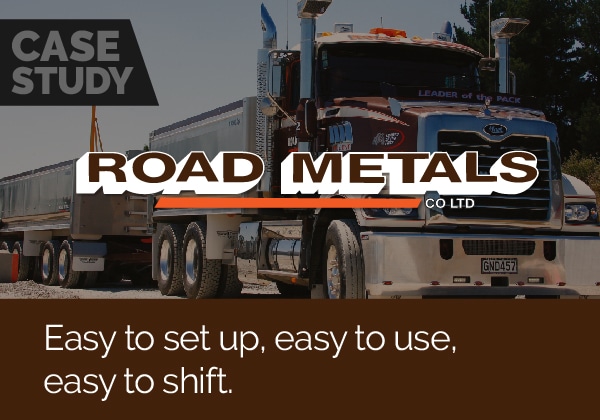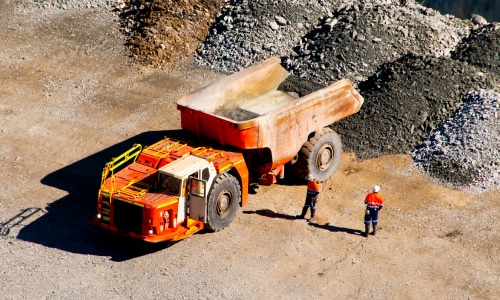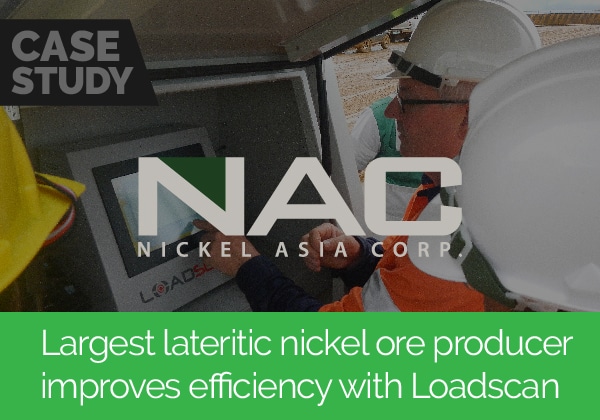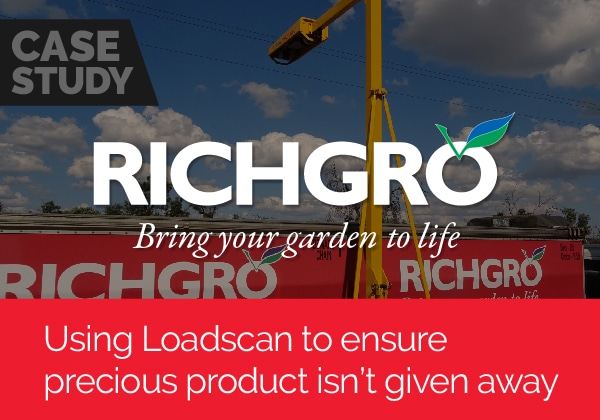Optimizing Mining Operations with Pitram and Loadscan Integration at CSA Cobar The MAC [...]

Revolutionising quarry measurement and management
Project Details
| CATEGORY: | Quarries |
| PRODUCT: | LVS 3BMF |
| LOCATION: | Dunedin, New Zealand |
| WEBSITE: | thinkdelta.co.nz |
Russell Pratley, the Regional Environmental Supervisor for Dunedin infrastructure management company Delta, is pretty clear when asked why the company installed a Loadscan Load Volume Scanner (LVS) at a Dunedin City Council quarry in rural northern Taieri on the outskirts of the southern city; cost, installation location, and accuracy and relevance of load measurement.
A cost-effective solution for a flexible location
Russell explains that a traditional weighbridge posed both a logistical challenges and financial barriers, especially as there was the prospect of needing to relocate the weighbridge should the quarry expand in future years.
“The first thing was the cost of the weighbridge was going to be a lot more tricky for us, especially where we’ve got this scanner positioned,” he explains. “If we were going to mine this area then we’d have to shift the weighbridge…and so a lot of it was the cost.
“We’ve had a lot of experience with weighbridges in the past, and this causes a lot of headaches with load cells breaking and stuff like that,” he adds.
That cost factor, coupled with potential reliability issues of a weighbridge, led them to explore alternatives. Enter Loadscan, where an LVS-3BMF load scanner provided a solution tailored to their needs, offering not only cost-effectiveness but also a seamless integration into their operational framework.
“The volume scanner was the better option for us because we sell our metal by the cubic metre.”
“We’ve got weight scales on our loader and we’ll estimate how many cubic metres, as the loader weighs by tonne, but we never have sold it by the tonne.
“We’ve always measured by the cubic metre of gravel coming out — or any product coming out — by the cubic metre,” Russell states.
“It’s very hard to estimate cubic metres if you’re selling by the tonne.”
Embracing precision with volume scanner technology
As well as accurately measuring every truck load of material leaving the site, the data generated by the LVS also provides real-time updates which allows Russell to manage the annual totals being removed from the 14-hectare site.
“We pay a royalty to the City Council for every cubic metre that we sell that comes out of this quarry,” Russell says.
“It was like 30,000 cubes a year, and then the last 2 or 3 years it was down to 22,000. And now we’re at 18,000 cubes,” Russell says.
The quarry also sits on top of an aquifer, which is protected and, consequently, means the limit of the amount of gravel that can be extracted from the site is reducing as part of meeting environmental targets.
Waste Disposal Levy information
Perhaps more immediately relevant to the overall operation of the Delta quarry is the amount of cleanfill coming into the site, which then allows the land to be restored as the quarry is mined.
Trucks entering the site to dump cleanfill are scanned in through the LVS, with totals tallied and the companies then billed according to Ministry for the Environment’s (MFE) waste disposal levy scheme. This precision extends to different categories of clean fill, including class three, four, and even class five material entering the site.
“With the clean fill, we convert the MFE factor of 1.5 tonnes per cubic metre, and then we pay the levy back to the government for $10 a tonne,” Russell says.
“We load different categories of clean fill.
“We generally have class three and four clean fill.
“If we have a contractor doing subdivisions and they’ve got virgin material coming in here, then I can put a category into that machine saying class five, virgin material, so we’re capturing everything that comes in and out now.”
Navigating operational challenges with Loadscan
While acknowledging the reliance on truck drivers for correct data input, Russell emphasises the streamlined process Loadscan brings to their invoicing and administrative tasks through the cloud-based MyScanner web portal, which ties into the Delta billing and administrative system. The real-time access to information allows them to address concerns promptly and ensure accurate invoicing.
“That information is accessed by our administrator in town, and we have a guy in an office that that takes all that information and does the invoicing directly off that,” he says.
Accurate operation with Loadscan
Russell provides insights into the unique challenges posed by the Delta site, where Loadscan not only ensures compliance with the city council’s limits but also aids in responsible practices. The accurate measurement of various materials, including gravel, soil, and bark products they sell, reflects the precision and reliability of Loadscan’s technology.
“It works very, very accurately.”
Awesome technology
“I really think this system is awesome. It’s awesome technology. It works really, really well for what we’re trying to achieve.
Since being installed in December 2022, Russell says the scanner has proven its worth with accurate measurements and increased operational efficiency.
He says the technology and seamless integration into the Delta administrative system provide a serious contrast to the potential challenges a weighbridge would likely have brought, while delivering an accurate measurement tool that increases efficiencies.











































